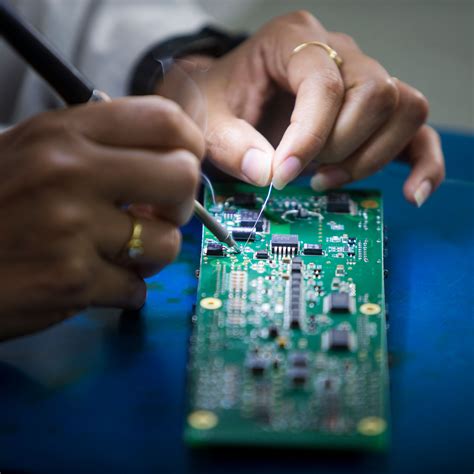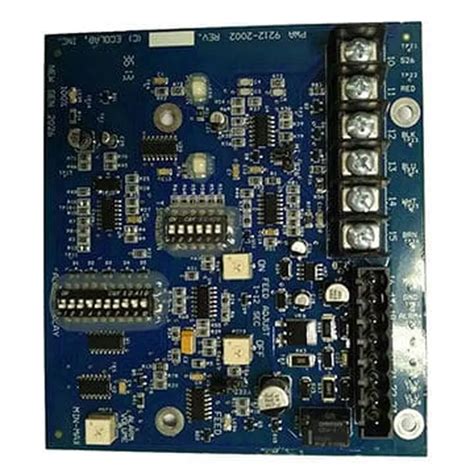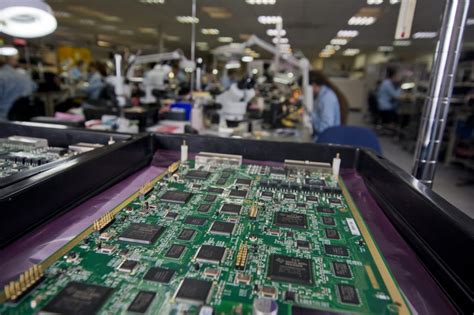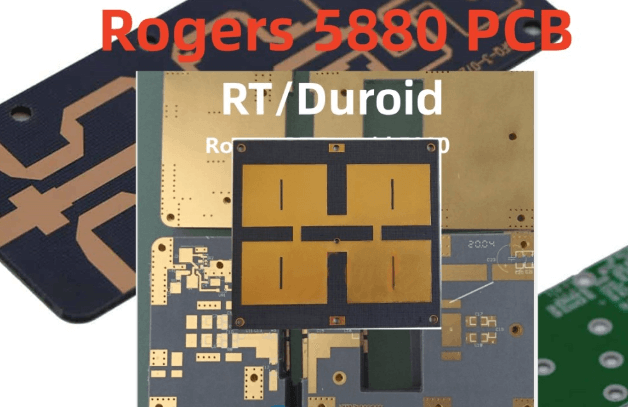Revolutionizing Production: The Power of Automated PCB Assembly
Key Takeaways
The landscape of PCB assembly has undergone significant transformation due to the integration of automation technologies. Modern PCBA processes leverage robotics, sophisticated software, and advanced machinery to enhance production capabilities. By incorporating these technologies, manufacturers experience remarkable improvements in efficiency, allowing for a rapid increase in output without compromising quality. For instance, automated systems minimize human error during assembly, leading to higher accuracy in placement and soldering of components. Moreover, automation helps streamline workflows by reducing cycle times and enabling continuous production schedules. Consequently, manufacturers find themselves better equipped to respond to the dynamic demands of the market while maintaining cost-effective operations. Overall, the adoption of automated solutions in PCB assembly not only paves the way for enhanced productivity but also sets a precedent for future innovation within the electronics manufacturing sector. The synergies produced from these advancements signal a new era in which quality control and adaptability are seamlessly integrated into everyday manufacturing operations.
The Evolution of PCB Manufacturing: A Brief History
The journey of PCB assembly and its evolution reflects significant advancements in technology and manufacturing methods over the decades. Initially, printed circuit boards (PCBs) were handcrafted, involving intricate manual processes that limited production scale and precision. As electronic devices became more prevalent in the mid-20th century, the demand for more efficient pcba processes surged. This led to the introduction of basic automation technologies which began to optimize production speeds.
By the 1980s and 1990s, with the advent of sophisticated machinery like pick-and-place systems and automated soldering techniques, the landscape of pcb assembly transformed dramatically. Manufacturers started to see improvements in both speed and accuracy, setting a new precedent for quality production. The integration of surface mount technology (SMT) further revolutionized PCB manufacturing by enabling compact designs.
Now, as we delve into modern techniques, we observe how automation has reached remarkable heights. Technologies such as robotics and artificial intelligence are laying the groundwork for unparalleled efficiency and quality control in pcba processes. The shift from manual labor to automated solutions has not only reduced human error but has also significantly increased production rates while maintaining detailed attention to precision.
| Year | Milestone | Impact |
|---|---|---|
| 1960s | Introduction of PCBs | Manual assembly; low precision |
| 1980s | Emergence of automated machinery | Enhanced speed and accuracy |
| 1990s | Adoption of SMT | Compact designs with higher functionality |
| 2000s | Rise of robotics in assembly lines | Reduced labor costs; improved consistency |
| Present | AI integration in manufacturing | Smart factories with predictive analytics |
The continuous evolution in PCB manufacturing emphasizes how each technological advancement serves not only to meet current demands but also to build a robust framework for future innovations within the industry. As we look ahead, it’s evident that embracing these shifts is crucial for staying competitive in a rapidly evolving market landscape surrounding pcb assembly.
Key Technologies Driving Automated PCB Assembly
The landscape of PCB assembly has seen remarkable advancements in recent years, largely driven by innovative technologies that enhance productivity and precision. Leading the charge are surface mount technology (SMT) and pick-and-place machines, which have revolutionized the placement of components on printed circuit boards (PCBs). These systems operate at lightning speed and with incredible accuracy, significantly reducing the chances of human error. In addition, automated optical inspection (AOI) systems allow for real-time monitoring of the soldering process, ensuring defects are caught early in production. Embracing technologies like robotics, which can perform repetitive tasks with consistency and speed, further enables manufacturers to optimize their PCBA processes. Additionally, advancements in software integration and data analytics have empowered factories to monitor operations seamlessly, predicting maintenance needs and minimizing downtime. As these technologies continue to evolve, they not only drive efficiency but also foster a culture of innovation, setting new benchmarks for quality and reliability in the competitive realm of automation-focused PCB manufacturing.
Benefits of Automation: Efficiency and Cost Reduction
The implementation of automated PCB assembly systems has proven to be a game-changer in the realm of electronic manufacturing. By integrating these advanced technologies, manufacturers are witnessing significant improvements in overall efficiency. With processes that were once performed manually now handled by machines, the pace of production has accelerated, leading to quicker turnaround times for PCBA projects. This increase in speed does not come at the expense of quality; in fact, automation allows for tighter tolerances and consistency in precision that is challenging to achieve through human effort alone.
Additionally, one of the most compelling advantages of automation is its potential for cost reduction. By minimizing human labor and optimizing use of materials through precise PCB assembly, companies can significantly lower operational expenses. The initial investment in automated systems often yields a substantial return as production costs decrease over time. Moreover, these systems can operate continuously with minimal downtime, further enhancing productivity and profitability.
“To stay competitive in the evolving market landscape, embracing automation and its benefits for pcb assembly processes is not just advantageous; it is essential.”
Furthermore, as businesses expand and adapt to varying consumer demands, automated assembly lines offer remarkable flexibility. Manufacturers can quickly reconfigure their systems to accommodate different design specifications or scale up production without a substantial increase in overheads. As a result, the integration of automation not only drives efficiency and reduces costs but also provides a robust framework for manufacturers to thrive amidst changing market dynamics.
Precision Engineering: Enhancing Quality Control in PCB Assembly
In the realm of printed circuit board assembly (PCB assembly), achieving high standards of quality control is paramount. Automation plays a crucial role in this aspect, transforming traditional practices into a more precise and efficient process. With the incorporation of innovative technologies such as machine vision, automated inspection systems, and sophisticated algorithms, manufacturers can now ensure that each component is placed correctly and that all solder joints meet required specifications. These advancements not only minimize human error but also facilitate real-time monitoring, allowing for immediate adjustments during the PCBA process. As a result, manufacturers can significantly enhance their quality assurance measures while maintaining stringent compliance with industry standards. Improved quality control also translates to reduced rework rates and lower material wastage, thereby driving overall operational efficiency and cost-effectiveness in PCB assembly production. The integration of these precision engineering techniques redefines how manufacturers look at quality in their workflows, firmly establishing automation as a pivotal element in the evolution of modern PCBA processes.
Streamlining Workflows: The Impact of Automation on Production Processes
The integration of automated PCB assembly processes significantly transforms production workflows, allowing manufacturers to enhance their efficiency dramatically. By employing automation, pcb assembly lines are designed to minimize human intervention and streamline operations, leading to faster turnaround times and reduced errors. In a typical pcba environment, machines can now handle repetitive tasks such as component placement, soldering, and inspection with remarkable precision. This results not only in faster production rates but also in consistently high-quality outputs that meet rigorous industry standards. Furthermore, automation facilitates improved data monitoring, allowing manufacturers to analyze production flows in real-time and identify bottlenecks effectively. By embracing these automated solutions, companies can adapt swiftly to changing market demands while optimizing resource utilization. As a result, the landscape of PCB manufacturing is evolving towards a more efficient model that prioritizes both speed and quality, ensuring manufacturers remain competitive in a dynamic industry.
Adapting to Market Needs: Flexibility in Automated PCB Manufacturing
The landscape of automated PCB assembly is rapidly evolving, necessitating a level of flexibility that manufacturers must embrace to stay competitive. As market demands fluctuate, the ability to swiftly adapt production lines is crucial. Automated systems allow for the dynamic reconfiguration of pcba processes, accommodating various designs and batch sizes without substantial downtime. This adaptability is achieved through advanced software integration that enables manufacturers to make real-time adjustments, ensuring that both efficiency and precision are maintained throughout the pcb assembly process. Furthermore, automation facilitates the introduction of new technologies and materials into pcb assembly, allowing companies to respond rapidly to technological advancements and consumer preferences. By leveraging automated solutions, manufacturers not only enhance their operational capabilities but also foster a culture of continuous improvement and innovation. The future of electronics production hinges on this flexibility—where companies can fine-tune their methodologies in line with emerging trends while delivering high-quality products that meet customer specifications. Ultimately, the integration of flexibility into automated pcb assembly systems showcases a significant advancement in how electronic components are produced, reinforcing a commitment to quality while maximizing adaptability in a competitive market.
Future Trends in Automated PCB Assembly and Production
As the electronics industry continues to evolve, the future of automated PCB assembly (PCBA) is poised for significant advancements driven by emerging technologies. One of the most notable trends is the integration of artificial intelligence and machine learning, which are set to enhance decision-making processes within production lines. These technologies can analyze vast amounts of data in real-time, allowing for quicker adaptations to changes in demand and improving overall operational efficiency. Another trend is the increased use of collaborative robotics, or cobots, which can work alongside human operators to optimize workflow in PCB assembly tasks while maintaining safety standards.
Additionally, as sustainability becomes a growing concern, manufacturers are focusing on eco-friendly practices by implementing energy-efficient machinery and minimizing waste during the pcba process. The rise of smart factories featuring connected devices will enable manufacturers to monitor equipment status remotely and predict maintenance needs proactively, thereby reducing downtime. Furthermore, advancements in automation technology will lead to greater customization capabilities in PCB assembly, allowing businesses to produce tailored products that meet specific customer needs without sacrificing speed or quality.
Overall, these trends signal a transformative shift within the industry, positioning automated PCB assembly as a key player in driving innovation and productivity while meeting the dynamic challenges of modern markets.
Case Studies: Successful Implementation of Automation in PCB Manufacturing
The successful integration of automation in PCB assembly is clearly illustrated by several compelling case studies from leading manufacturers in the electronics sector. One notable example is a well-established company that shifted to automated PCB assembly processes, resulting in a remarkable increase in production efficiency. By implementing state-of-the-art pick-and-place machines, they enhanced the speed and accuracy of their PCBA processes, significantly reducing assembly time and labor costs. This transition not only elevated their production capacity but also minimized human error, leading to improved overall quality.
Furthermore, another case study highlights a tech startup that adopted automation to cater to custom orders quickly. Utilizing flexible manufacturing systems, they were able to adapt their operations dynamically, ensuring timely responses to changing customer requirements without sacrificing production quality. Their innovations in design software coupled with automated assembly lines allowed them to achieve shorter lead times, establishing a competitive edge in the market.
These examples underscore the transformative potential of automation within PCB assembly, demonstrating how advanced technologies can streamline processes and create more resilient manufacturing environments. By relying on automation, these companies have not only optimized their operations but have also set new benchmarks for efficiency and precision in the electronics industry.
Conclusion
The journey towards automated PCB assembly has fundamentally altered the landscape of electronic manufacturing. As industries continuously seek methods to enhance efficiency and reduce costs, the implementation of automated processes has proven to be a pivotal move. The benefits of such automation are profound; by employing state-of-the-art technologies, manufacturers can improve the precision and quality of their PCB assemblies, ensuring that the final products meet the stringent standards expected in today’s market. With remarkable capabilities in streamlining workflows, automation not only accelerates production rates but also allows companies to adapt swiftly to evolving customer needs and market dynamics. This flexibility is essential in a sector that demands rapid response times and high accuracy. The advancements in PCBA technologies, coupled with robust quality control mechanisms, set a new benchmark in manufacturing excellence. In essence, the integration of automation in PCB assembly processes points towards a future characterized by innovation, improved productivity, and sustained competitive advantage in the electronic industry.
FAQs
The implementation of automated PCB assembly has raised a number of questions among industry professionals and enthusiasts alike. One common question is, “What exactly is automated PCB assembly?” This refers to the use of machines and software systems to facilitate the assembly of printed circuit boards (PCBs) with minimal human intervention. Another frequent inquiry revolves around the benefits of this approach. Specifically, manufacturers gain significant advantages in terms of efficiency, allowing for quicker turnaround times and decreased production costs. Additionally, automation enhances the precision of pcba (printed circuit board assembly), reducing the likelihood of errors that can occur in manual processes.
Furthermore, individuals often wonder about the potential for flexibility in automated systems. The answer is affirmative: with modern technologies, companies can easily adjust their production lines to meet changing market demands without sacrificing quality or speed. There’s also curiosity about the investment required to adopt these technologies. While initial costs can be substantial, many businesses find that long-term savings and increased output justify this expense.
In summary, automated pcb assembly is not merely a trend; it represents a pivotal shift toward improved manufacturing processes that promise better quality products and enhanced responsiveness to market dynamics. For more information on how your organization can benefit from these advances, please click here: Automated PCB Assembly.







